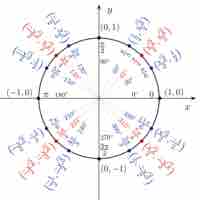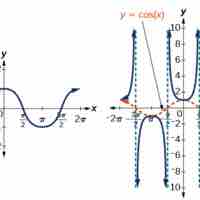Chapter 10
Trigonometry
By Boundless
The Pythagorean Theorem,
Trigonometric functions can be used to solve for missing side lengths in right triangles.
The mnemonic SohCahToa can be used to solve for the length of a side of a right triangle.
The inverse trigonometric functions can be used to find the acute angle measurement of a right triangle.
Radians are another way of measuring angles, and the measure of an angle can be converted between degrees and radians.
Identifying points on a unit circle allows one to apply trigonometric functions to any angle.

The unit circle and a set of rules can be used to recall the values of trigonometric functions of special angles.
The functions sine and cosine can be graphed using values from the unit circle, and certain characteristics can be observed in both graphs.
Characteristics of the tangent function can be observed in its graph.
Trigonometric functions have reciprocals that can be calculated using the unit circle.
Each trigonometric function has an inverse function that can be graphed.
The law of sines can be used to find unknown angles and sides in any triangle.
The law of cosines can be used to solve for angles and sides of a triangle in cases where other laws do not apply.
The Pythagorean identities are useful in simplifying expressions with trigonometric functions.
Trigonometric expressions can be simplified using special angles and a set of formulae for adding and subtracting angles.
Trigonometric expressions can be simplified by applying the double- and half-angle formulae.

The trigonometric symmetry identities are based on principles of even and odd functions that can be observed in their graphs.